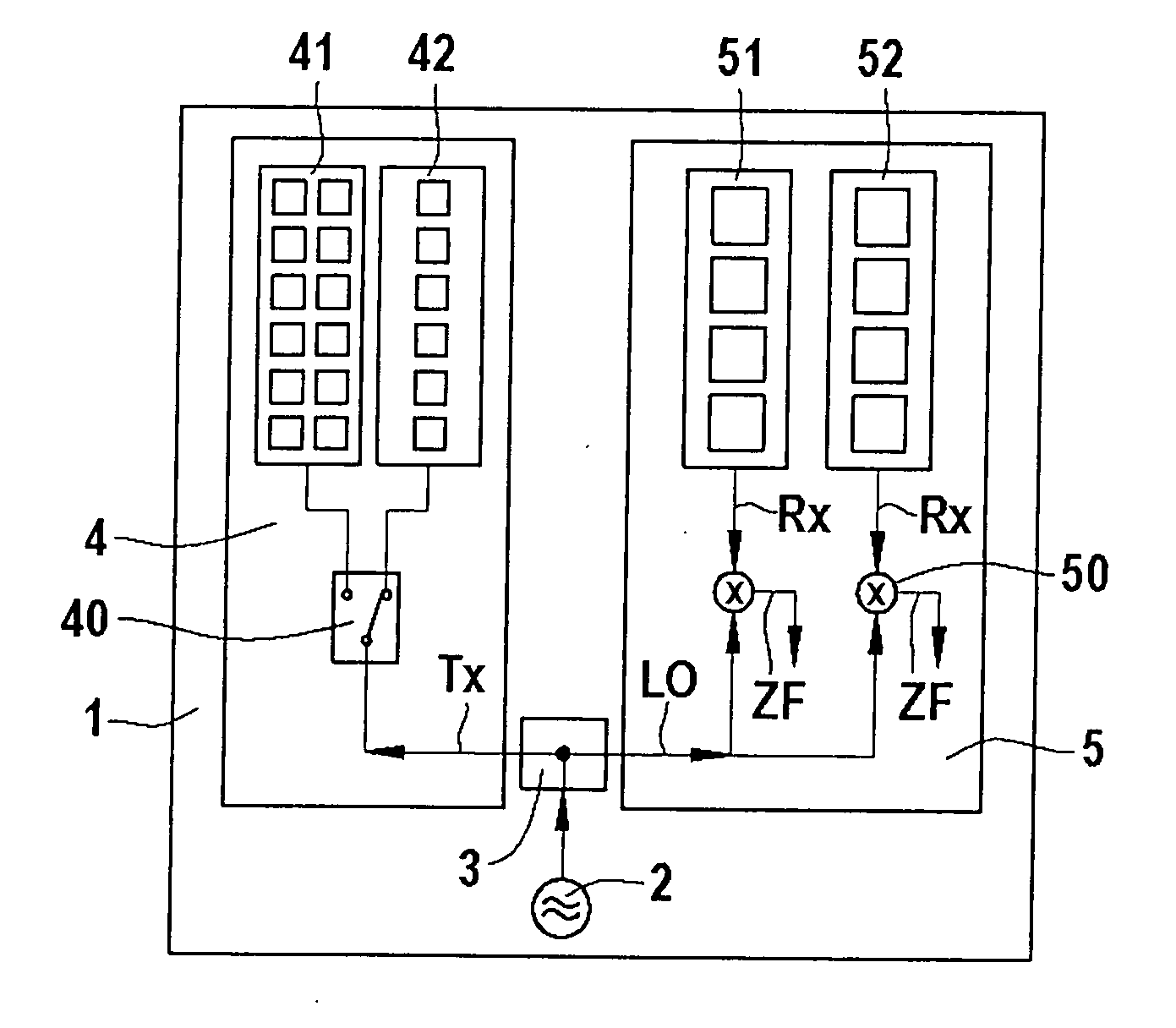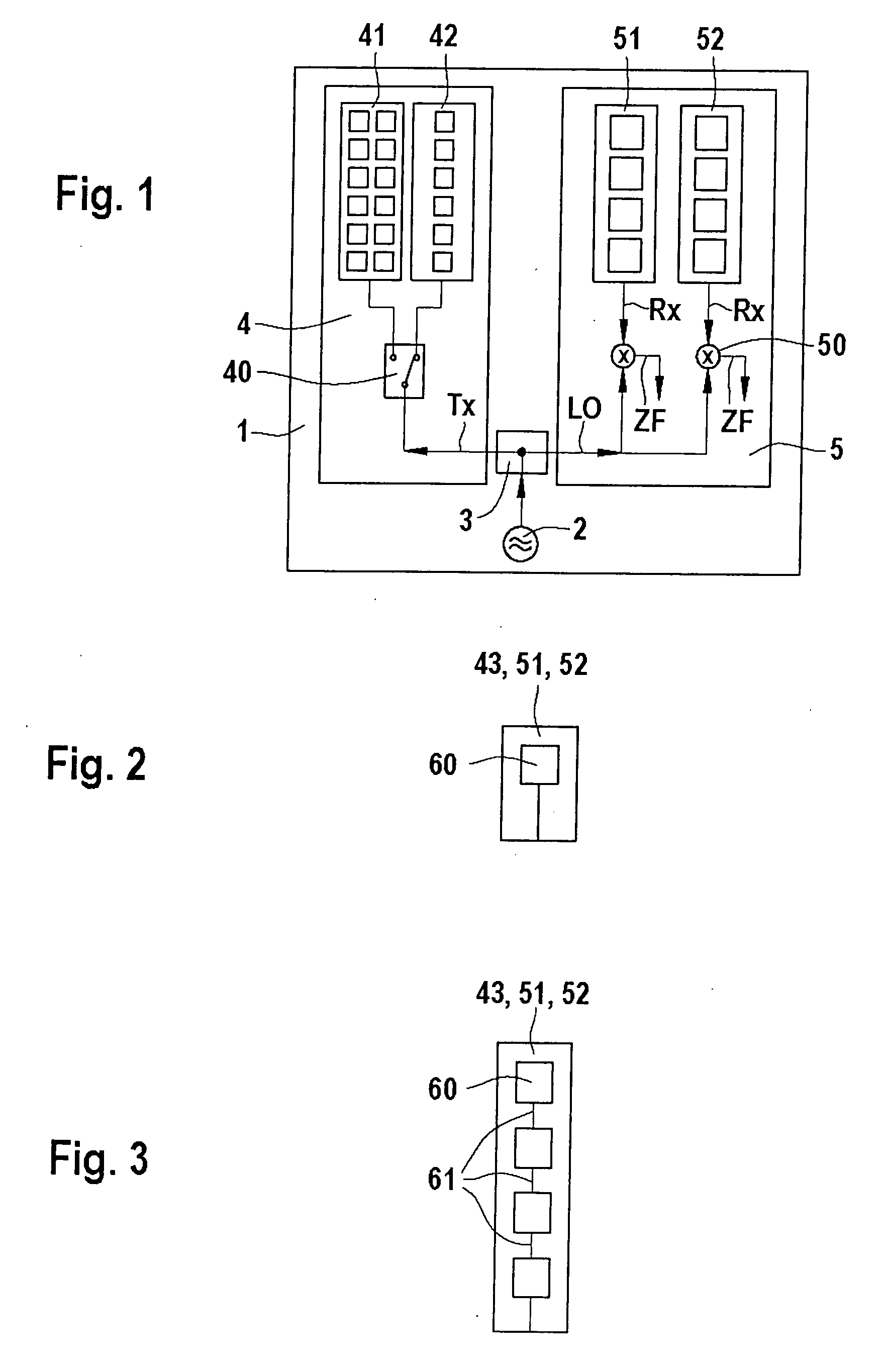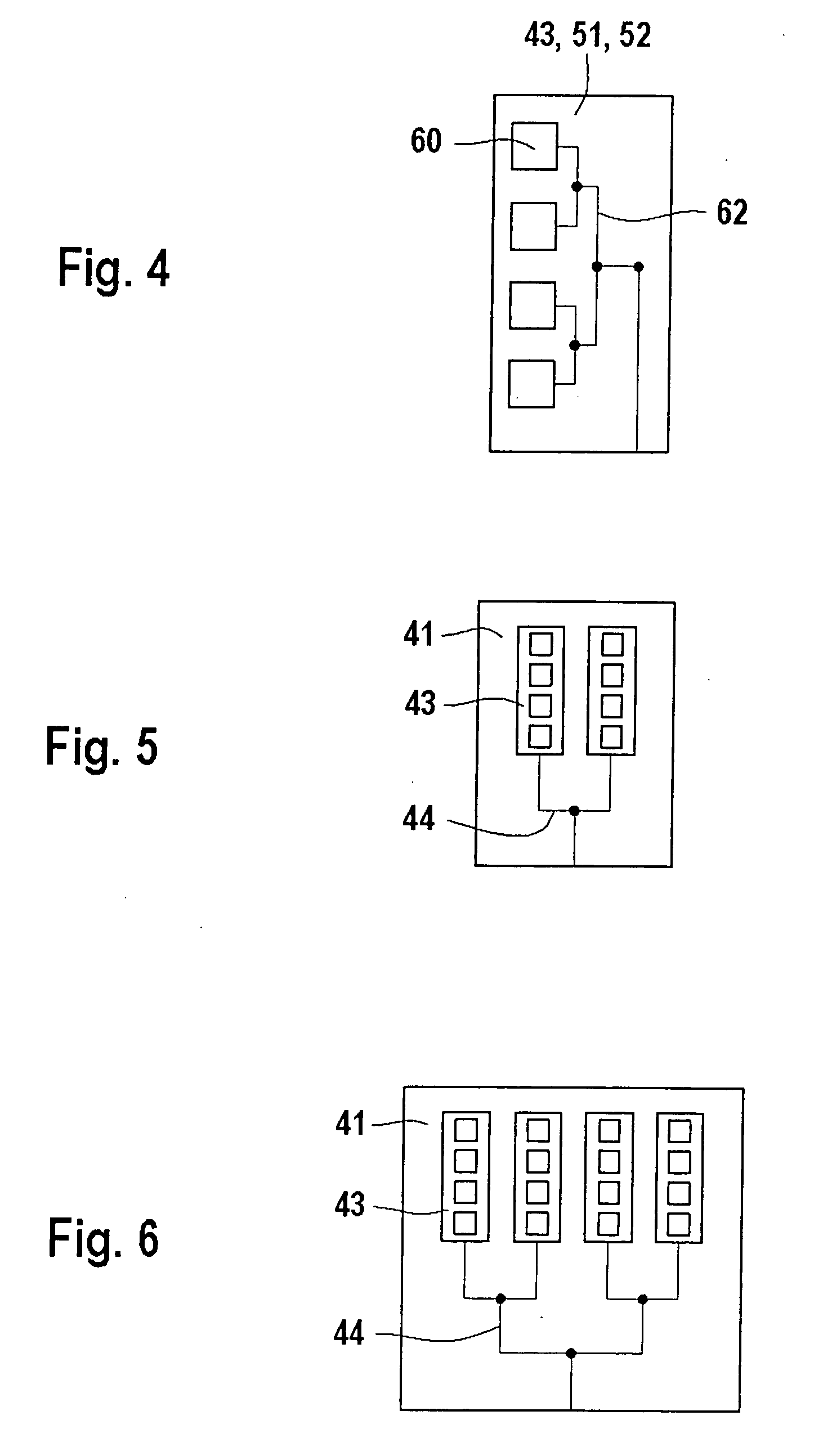Radar System
a radar and system technology, applied in the field of radar systems, can solve the problems of limited horizontal sensing width, insufficiently meeting the needs of vehicle manufacturers for substantially flatter sensors, and relatively large physical depth, and achieve the effects of optimally flat front ends, high precision of angular separation, and excellent angular separation
- Summary
- Abstract
- Description
- Claims
- Application Information
AI Technical Summary
Benefits of technology
Problems solved by technology
Method used
Image
Examples
Embodiment Construction
[0033]FIG. 1 is a block diagram of a radar front end 1. This front end 1 is made up specifically of:[0034]a modulatable 77-GHz source 2 (so-called modulated local oscillator), stabilized optionally via a PLL and optionally via a DRO, which may be highly integrated into so-called MMICs;
a transmitting unit 4 made up of:[0035]at least two different transmitting antennas 41 and 42 using planar technology (patch antennas), of which one antenna 41 is designed so that by corresponding superimposition of the waves of the individual radiators belonging to antenna 41, it generates a comparatively strongly collimated antenna lobe; a further antenna 42 which is designed so that by corresponding superimposition of the waves of the individual radiators belonging to antenna 42, it generates a comparatively wide azimuthal antenna characteristic, or comprises only one radiator element; optionally further transmitting antennas which are designed so that they generate further specific transmission cha...
PUM
 Login to View More
Login to View More Abstract
Description
Claims
Application Information
 Login to View More
Login to View More - R&D
- Intellectual Property
- Life Sciences
- Materials
- Tech Scout
- Unparalleled Data Quality
- Higher Quality Content
- 60% Fewer Hallucinations
Browse by: Latest US Patents, China's latest patents, Technical Efficacy Thesaurus, Application Domain, Technology Topic, Popular Technical Reports.
© 2025 PatSnap. All rights reserved.Legal|Privacy policy|Modern Slavery Act Transparency Statement|Sitemap|About US| Contact US: help@patsnap.com



